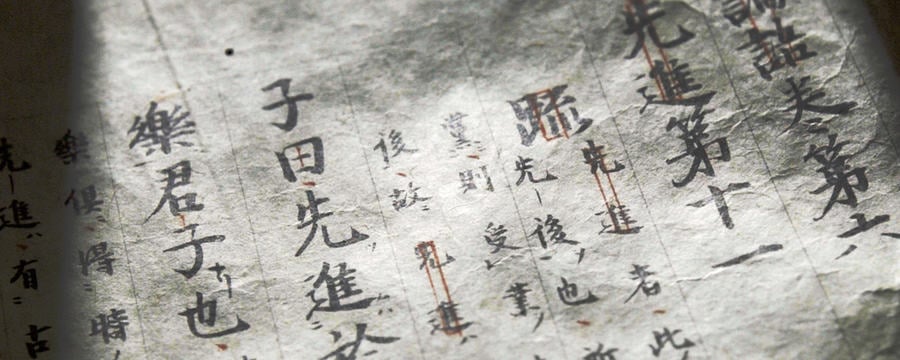Home / History / Social History / Sino-Japanese Interactions Through Rare Books / The Analects’ position within different academic currents
This article is from the free online
Sino-Japanese Interactions Through Rare Books


Reach your personal and professional goals
Unlock access to hundreds of expert online courses and degrees from top universities and educators to gain accredited qualifications and professional CV-building certificates.
Join over 18 million learners to launch, switch or build upon your career, all at your own pace, across a wide range of topic areas.

 Fig.1 Rongo Kogi『論語古義』
Fig.1 Rongo Kogi『論語古義』 Fig.2 Rongo-chō by Ogyū Sorai (manuscript) 『論語徴』
Fig.2 Rongo-chō by Ogyū Sorai (manuscript) 『論語徴』 Fig.3 Edo-period edition of the Analects owned by Matsuzaki Kōdō 『論語』江戸刊・松崎慊堂書入
Fig.3 Edo-period edition of the Analects owned by Matsuzaki Kōdō 『論語』江戸刊・松崎慊堂書入 Fig.4 Rongo shūsetsu 『論語集説』
Fig.4 Rongo shūsetsu 『論語集説』





